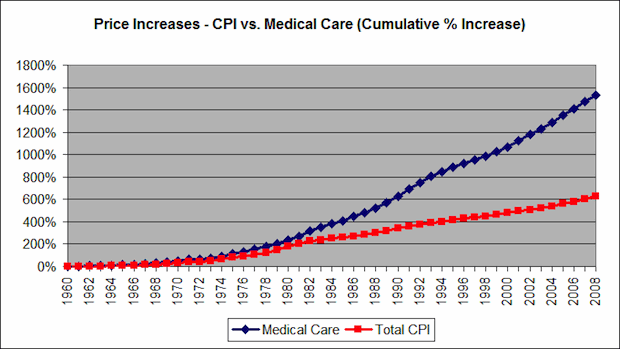Long Term Concerns
Below is a graph of Total Federal Public Debt as a percent of GDP. What concerns me is not the fact that debt is more that 100% of GDP but that the level is rising so rapidly. Fiscal sustainability is something we must strive for. I define fiscal sustainability as this graph staying more or less flat or even turning down. The question then is “Why is this graph rising and what is it likely to do in the future?

The fiscal problem is not with so-called discretionary spend but with entitlements. The expression “entitlements” does not even mean that anyone has legal entitlement to even to a return on the funds they put into Social Security. In Flemming v. Nestor the Supreme Court “… ruled that no such contract exists, and that there is no contractual right to receive Social Security payments. Payments due under Social Security are not “property” rights and are not protected by the Takings Clause of the Fifth Amendment. The interest of a beneficiary of Social Security is protected only by the Due Process Clause.
“Entitlements” means only that Congress does not have to vote on funding of these. The problem is that by deliberately choosing to ignore the underfunding of entitlements for its political convenience Congress has created a massive fiscal time-bomb.
The present value of the underfunding of the future expenses of Medicare and Social Security is about $77.9 trillion. Details here: The Fiscal Cliff Is a Molehill Compared to Entitlement Underfunding The question then is: can an increase in taxes make these funds solvent? Total household wealth as of 4Q2012 was, according to the Federal Reserve, $66.072 trillion. Note that “household wealth” includes the most of the value of all U.S. corporations because those corporation are owned mostly by U.S. households in the form of direct ownership, mutual funds, and pension holdings. If all of the net wealth of all Americans were seized and donated to the entitlement trust funds they would still be underfunded. In addition of this liability which exceeds all household wealth by $11.9 trillion the Federal government also has debt of $16.8 trillion. If that does not scare you try this: these estimates assume that the future care of medical expenses will rise at CPI-U +1%. Take a look at this chart which shows medical care rising at a higher rate than CPI. This sharp difference between the rate of increase in the cost of medical care and CPI means that the shortfall is even worse. Add to this the uncertain change in the cost of Health Care consequent to Obamacare.

In short it is Medicare and Social Security underfunding which is going to create a massive problem. Obama just suggested a modest correction to Social Security which was from the Simpson-Bowles report. Democrats dissed him big time. Obama’s suggestion fixes less that 1% of the underfunding problem.
Clearly there is no political will to fix the problem. Getting reelected is incompatible with fiscal sustainability. I do not blame this on Congress but on the voters.
Keeping interest rate low on government debt is allowing us to not face the music. Once interest rates rise debt service will be painful.
The point here is that these promises cannot be kept by only raising taxes. Expenses must be reduced. The change from Simpson-Bowles which Obama suggested last week would save $339 billion over 10 years. Let’s call this $300 billion of present value. We only need to do this 260 more times to have solved the entitlement underfunding problem.
Despite reading this, have a nice weekend. You can follow my daily posts on economics on Twitter at @dicklepre.
